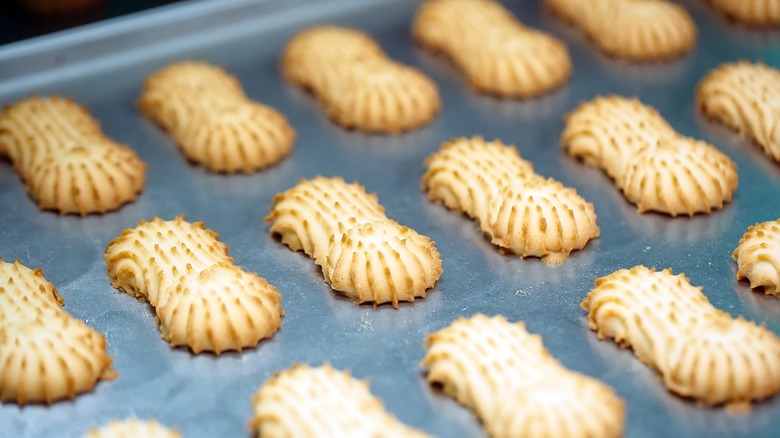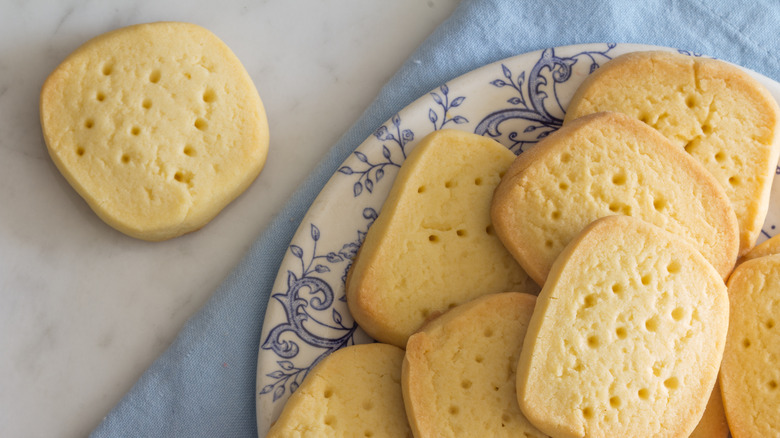The Ingredient You Need For True Irish Shortbread
Munching on shortbread means taking a bit out of history, as these delightful baked biscuits have been enjoyed since before the 12th century. Think of shortbread as a descendant of medieval bread. (In fact, bakers once tried to categorize shortbread biscuits as bread to avoid paying biscuit tax).
Traditional shortbread biscuits were twice-baked pieces of leftover bread dough. The treats were considered luxurious at a time when resources were limited, and shortbread was saved for holidays and noteworthy occasions like weddings, New Year's, and Christmas celebrations. In time, the original recipe — a hardened, barely sweet rusk – evolved into more textured, flavorful, and rounded shapes that looked like the fabric used to make petticoats. By the 16th century, butter was added to the recipe, and the resulting texture of these biscuits was less dense and more crumbly, similar to the shortbread recipes that are frequently enjoyed today.
Flour, sugar, and butter have remained the essential ingredients of most shortbread recipes, but the type of each ingredient you use will make a noticeable difference in the texture and taste of the biscuits you take out of your oven.
The right kind of fat
Though the ingredient list to make shortbread is, indeed, short, variations can be made with the inclusion of other flavors — lemon, lavender, rosemary, or orange, to name a few. The "short" texture of this recipe comes from its considerable amount of fat, and admittedly, it can be difficult to master the right balance.
While butter, flour, and sugar each have an important role in the recipe, Martha Stewart insists that butter can make or break the finished product. To make rich, high-quality shortbread biscuits, reach for Irish butter like unsalted Kerrygold or other brands that make butter from grass-fed cows, Stewart instructs. For a grainier biscuit texture, use rice flour, or if you're aiming for a smoother biscuit, add cornstarch to your recipe.
Because Irish butter packs a higher fat content, it reaches room temperature quickly when removed from your fridge. In 15 minutes, you can be on your way to whipping up a tasty batch of shortbread to serve alongside warm cups of coffee and tea.

